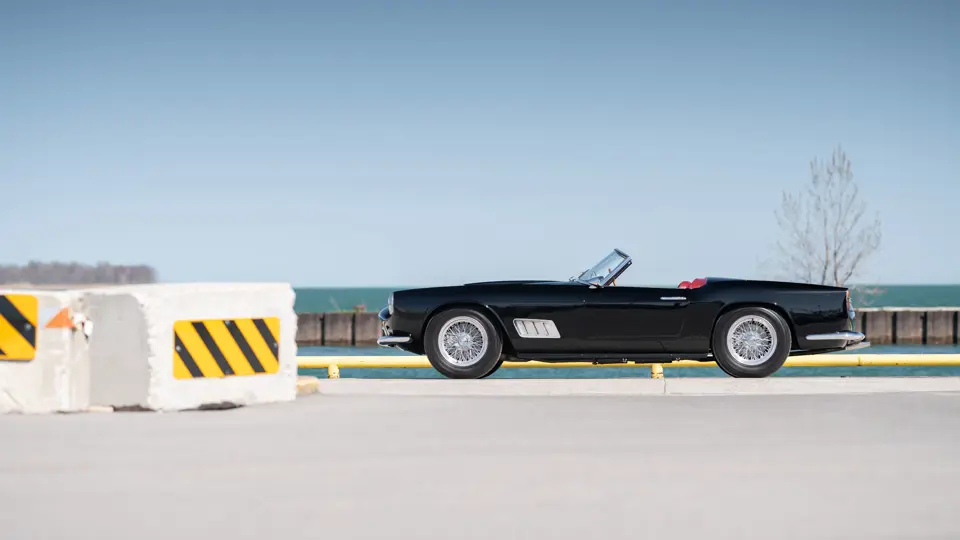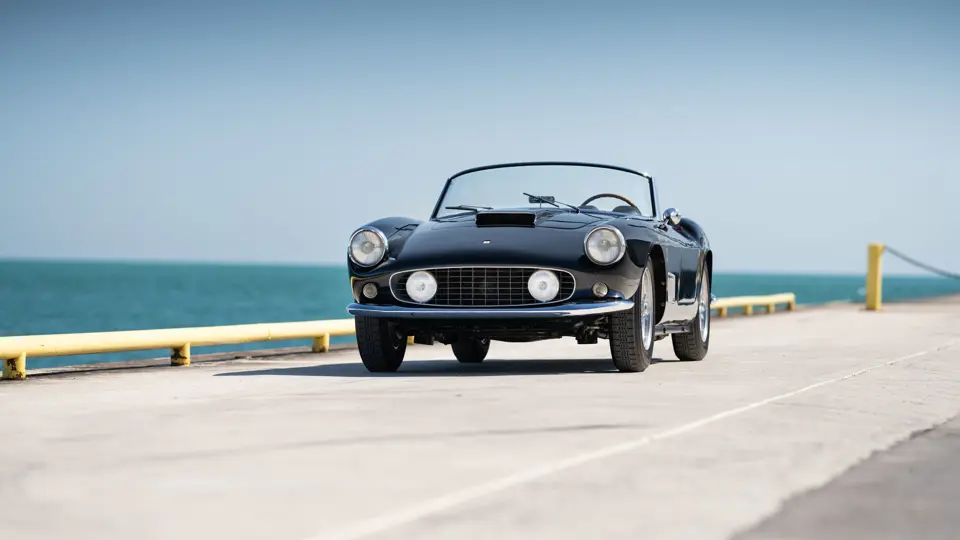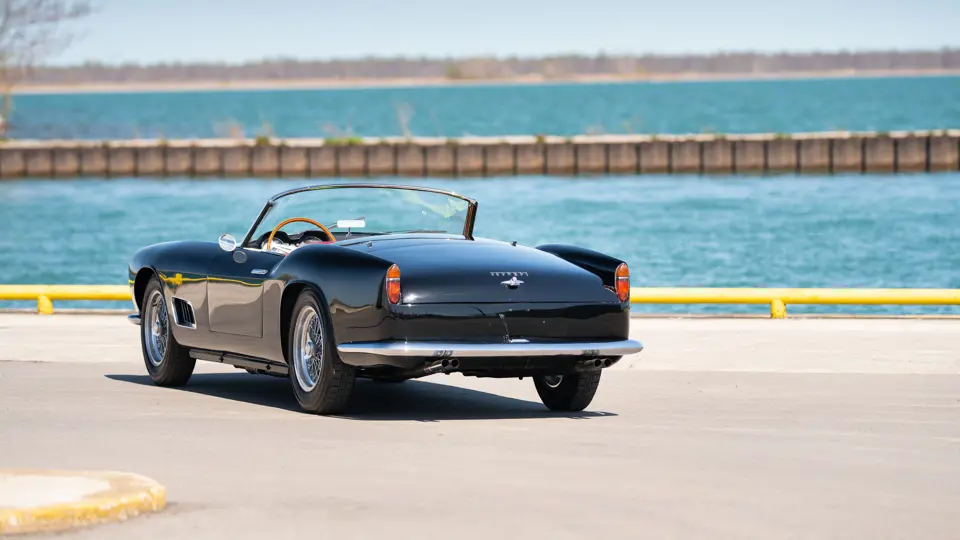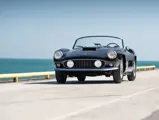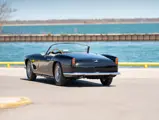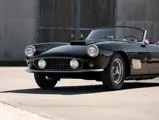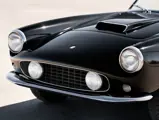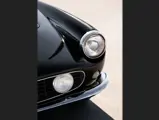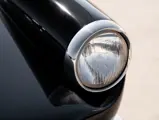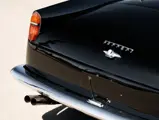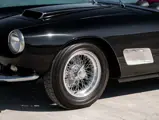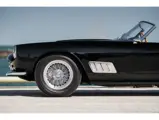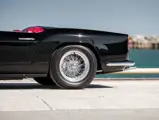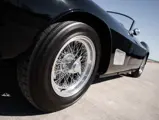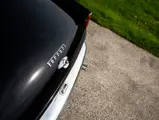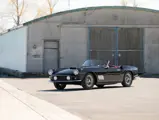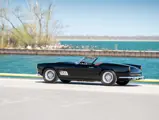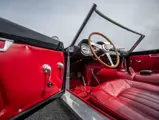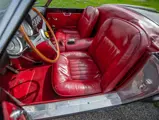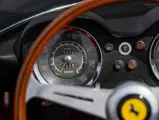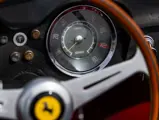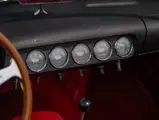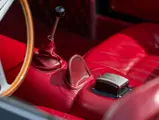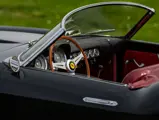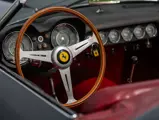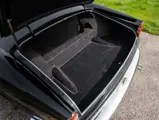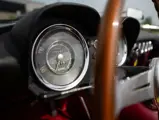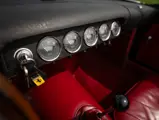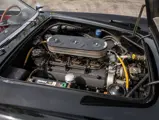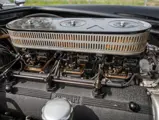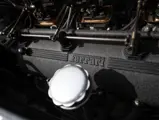
1959 Ferrari 250 GT LWB California Spider by Scaglietti
{{lr.item.text}}
$5,615,000 USD | Sold
{{bidding.lot.reserveStatusFormatted}}
- The 19th of 50 long-wheelbase examples
- Used in the 1967 Italian film Le Dolci Signore (internationally released as Anyone Can Play)
- Formerly owned by noted Swiss racing driver Jo Siffert
- Retains matching-numbers engine; presented in the original factory-appointed color combination of Nero over Rosso
- Offered from 19 years of fastidious care under current ownership
- Continues to benefit from 1990s restoration by Phil Reilly & Company; a handsome and faithfully presented example of Ferrari’s most celebrated spider
CALIFORNIA LOVE
The proverbial sports car hall of fame is full of models that claim one triumph or another, but very few exude the power and charm of Ferrari’s 250 GT California Spider. Maranello had achieved great heights with its 250 GT platform ever since the FIA changed displacement limitations following the disastrous 1955 24 Hours of Le Mans, finding remarkable success in sports car competition with the Tour de France and Testa Rossa models. Alongside these wondrous racing machines, Ferrari built a magnificent lineup of roadgoing 250 GT coupes and cabriolets that came to define the peak of engineering and style.
In 1957, however, one man dared to push the boundaries even further. John von Neumann was a California-based importer and co-founder of the local sports car club who had become a Ferrari distributor on the West Coast. He proposed the idea of a dual-use open Ferrari that could be driven to the track and raced before being driven home, in the tradition of Maranello’s great berlinettas. Official Ferrari importer Luigi Chinetti was intrigued by von Neumann’s idea, and before long a new 250 GT variant entered production: the California Spider.
Sportier than the concurrent 250 GT Cabriolet, the California Spider shared the Tour de France berlinetta’s chassis and carrozzeria, its open coachwork being designed and built by the legendary Sergio Scaglietti. Scaglietti’s coachwork was a revelation of the potential proportions of the 250 GT, with sensually sculpted fenders complemented by louvered vents just aft of the front wheels. This was a Ferrari built in every sense to enjoy—wondrous to hear, viscerally thrilling in performance, and beautiful to admire.
Initially built upon Ferrari’s 2,600-millimeter wheelbase chassis, which was retroactively referred to as the long wheelbase (LWB), the early California Spiders made a splash in GT competition, taking a class win at Sebring in 1959 and finishing 5th overall at Le Mans a few months later. Many examples were exported to the United States, and these cars duly made their mark at SCCA events.
Fifty examples of the California Spider were built on the long-wheelbase chassis before Ferrari introduced its short-wheelbase platform, to which the California Spider was adapted. While the SWB cars undoubtedly have a following of their own, it is interesting to note how the design was more elegant and harmonious in the original 2,600-millimeter guise. Smoother and more luxurious, the long-wheelbase examples drive with superior ride quality and are more stylish in many enthusiasts’ opinion.
In short, the original LWB California Spider was the super-luxury choice of a true gentleman, elegant, powerful, and uniquely stylish. In many respects this was a car less suited for barreling down the Mulsanne Straight than it was for touring the winding roads above the Côte d’Azur: a picture-perfect machine that was the very embodiment of chic sophistication.
CHASSIS NUMBER 1217 GT
Emerging from nearly 20 years of seclusion under single ownership; retaining its matching-numbers V-12 engine; and presented in its original color combination, this California Spider is a particularly fetching example. According to the research of marque expert Marcel Massini, chassis number 1217 GT is the 19th of 50 long-wheelbase cars built. It was completed in February 1959, finished in Nero paint over an interior of Rosso leather, and configured with uncovered headlamps. Fitted with a factory hardtop, the Ferrari was sold new to the Officine Navali Campanella, a ship-building concern in Genoa, Italy.
A few years later the California was used in the filming of the 1967 Italian movie Le Dolci Signore (internationally released a year later as Anyone Can Play), where it was driven by the sultry French actress and recent Bond girl Claudine Auger. By the late 1960s the Spider was owned by the famed Swiss racing driver Jo Siffert, who by this time had founded his own garage and car dealership.
In January 1972 the Ferrari was sold by the Garage Siffert to the well-known Swiss dealer and motoring author Rob de la Rive Box, who a few months later found a buyer in Richard Merritt, one of the founders of the Ferrari Club of America. The California Spider found an appreciative home when it was acquired in late 1975 by George Heiser of Seattle, Washington. Mr. Heiser sought to locate the matching-numbers motor, which had been separated from the car several years earlier, and in 1979 he acquired the 250 GT Boano that was fitted with engine number 1217 GT, which was removed and returned to its rightful home in the California Spider.
After diligently maintaining the Ferrari for about a dozen years, and after watching the price appreciate from around $10,000 in 1975 to over $500,000 by 1987, Mr. Heiser decided to sell the Spider. Over the next six years the 250 GT was preserved in a noted collection in Sweden, sitting alongside a 250 GTO and several other California Spiders. By 1993 the car was acquired by the respected collector John Mozart of Palo Alto, California, and he commissioned a significant restoration by the marque experts at Phil Reilly & Company. At this time the Ferrari was cosmetically refreshed in its original color scheme, and disc brakes were installed for improved mechanical performance.
In 1994 the California Spider was sold to Fred and Ramona Bohlander of Monterey, California, and they presented the beautiful car at the FCA International Concours in Monterey that August. Ten years later the 250 GT was sold into the famous Matsuda collection, and during its brief time in Japan the car was featured in the February 2005 issue of the magazine Scuderia.
In August 2005 the Ferrari was offered at RM Auctions’ flagship Monterey sale, where it was acquired by the current owner. The California has since enjoyed 19 years of careful, climate-controlled storage, helping to ensure the car remains in authentic and sparingly used condition.
It is worth reiterating that 1217 GT retains its numbers-matching V-12 engine, greatly enriching the car’s authenticity. It should be noted that the car is currently fitted with a gearbox stamped with internal number 238 DR, which is believed to be from another 250 GT, as well as what is believed to be the original rear axle; however, due to the location of the stamping only the final two digits are still visible. Furthermore, the Ferrari was depicted in two authoritative books on the subject, George Carrick’s highly respected The Spyder California, and Stanley Nowak’s Ferrari on the Road. The Spider is fitted with two notable interior appointments that were installed very early in its life, a passenger hand-brace, and an unusual, upholstered shield pad just aft of the shifter that was probably intended as a footrest for small children.
Formerly a part of several of the world’s most prominent Ferrari collections, 1217 GT is ready to show, or a strong candidate for a more thorough freshening. This California Spider is a beautifully maintained and faithfully presented example of Maranello’s legendary blue-chip model. It would undoubtedly elevate any collection.
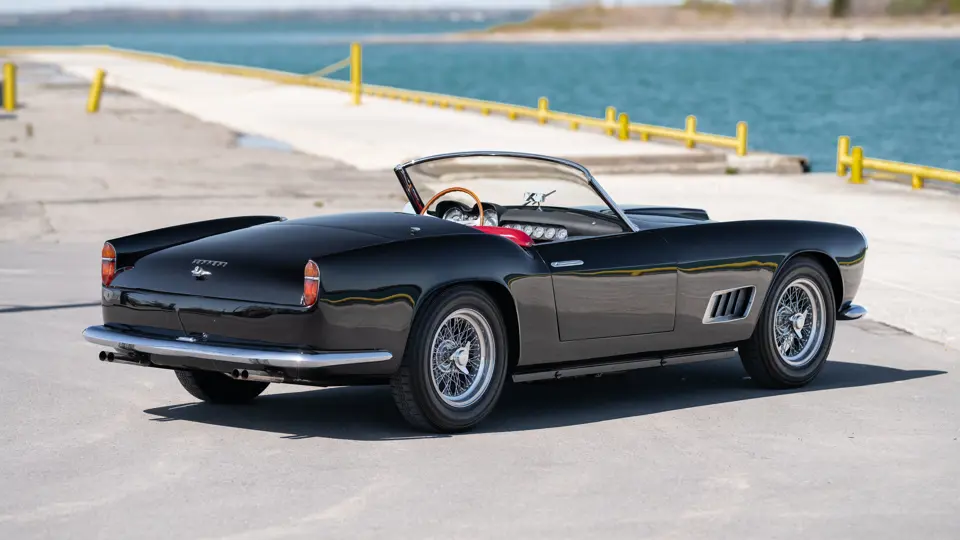



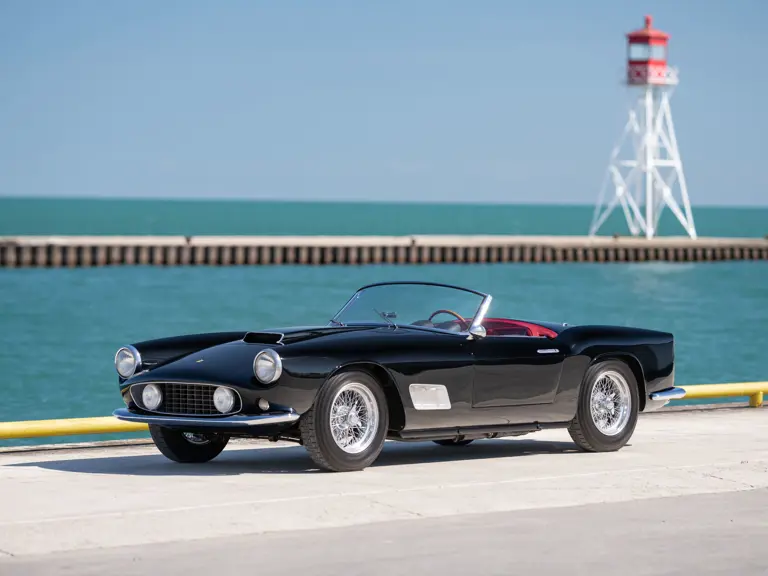
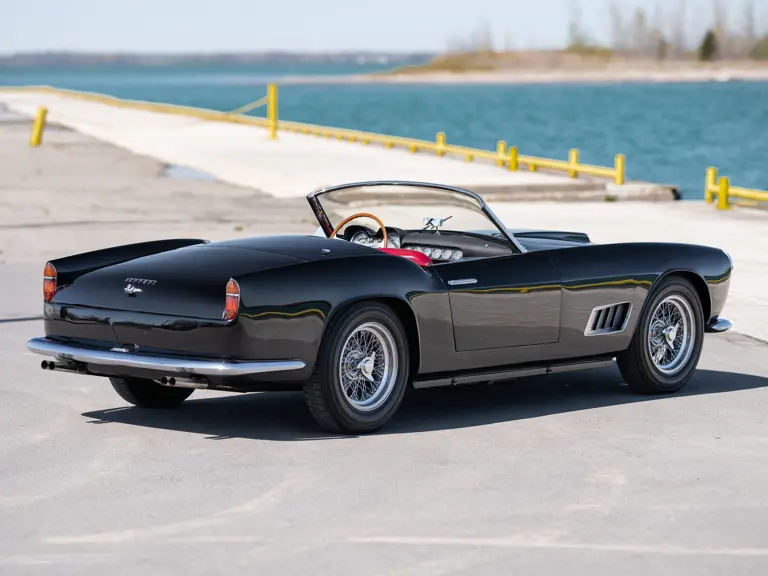
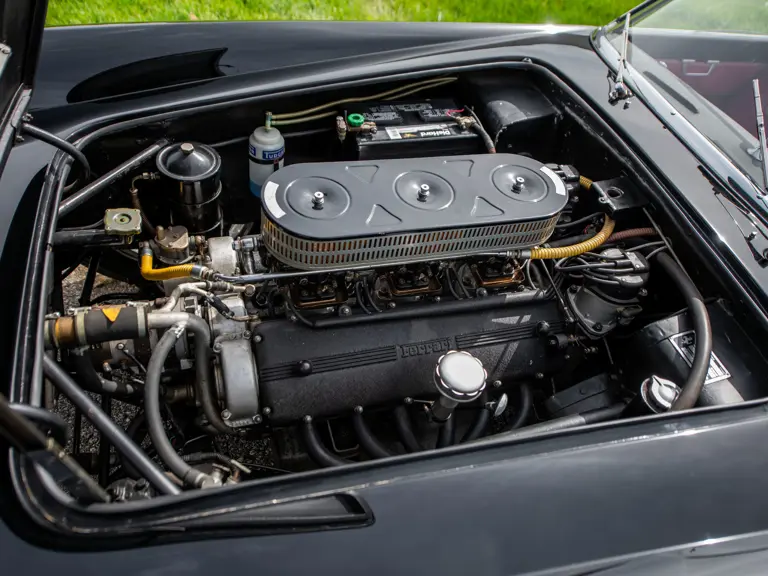
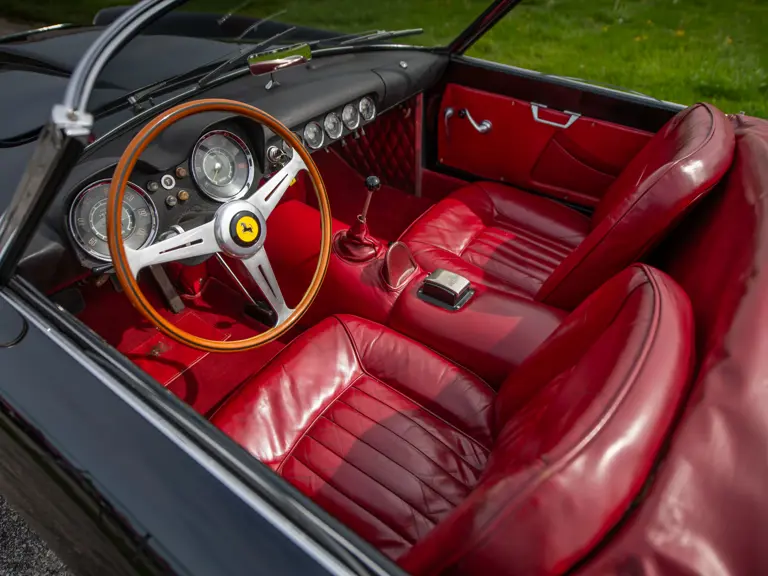
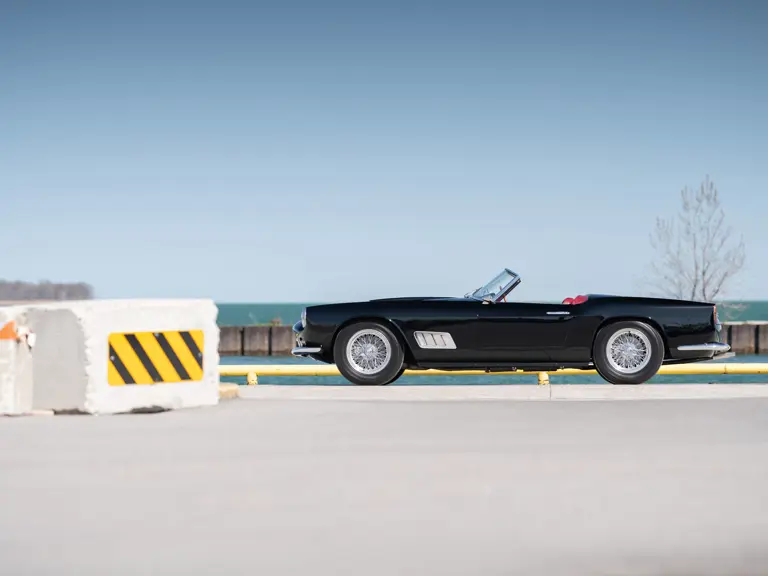
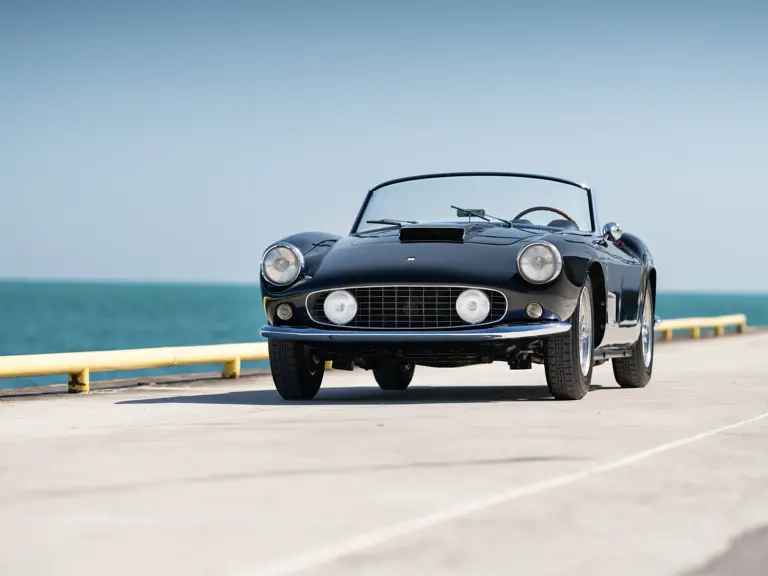
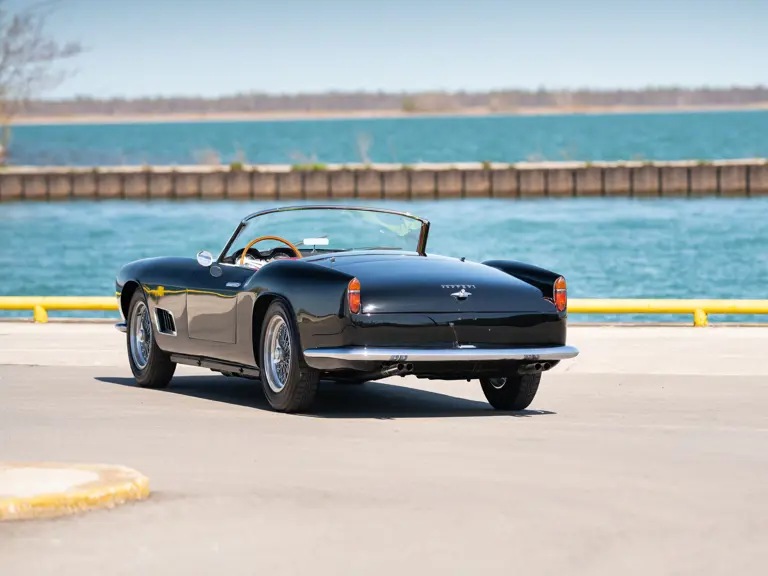
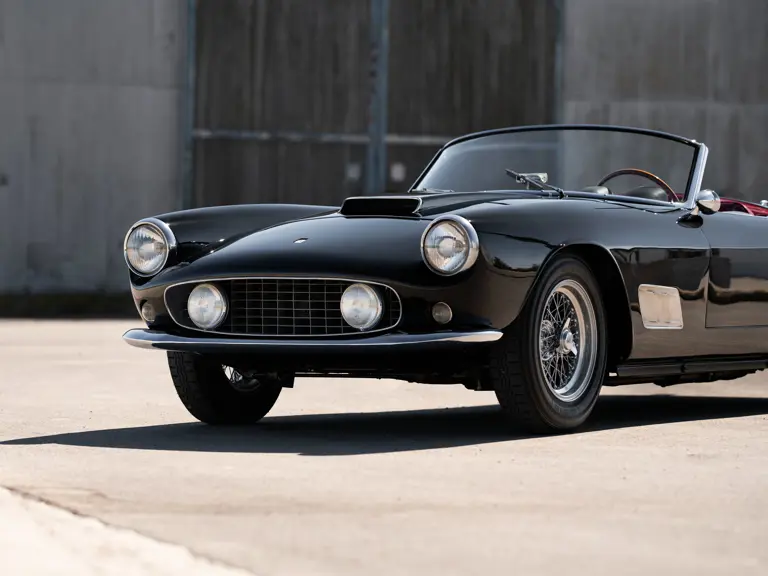
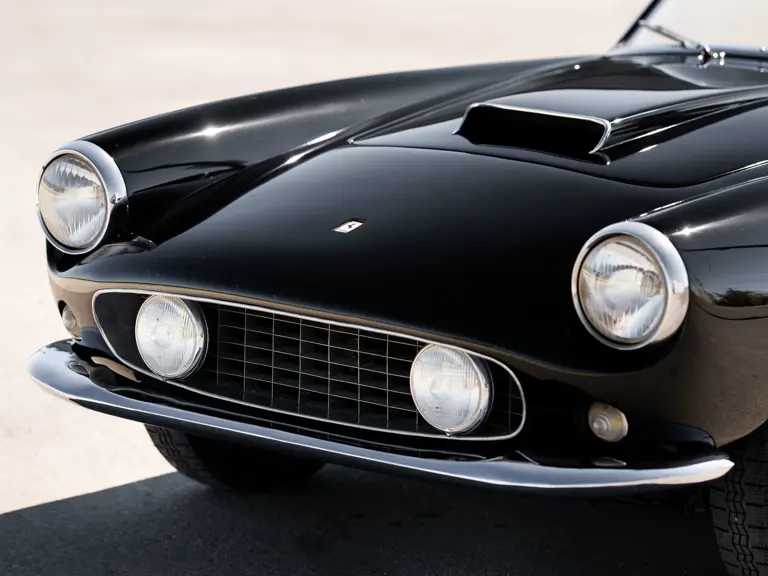
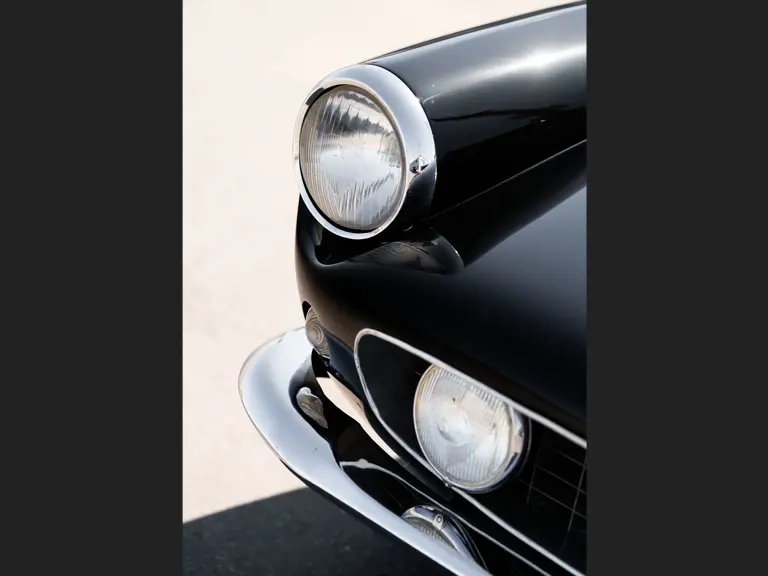
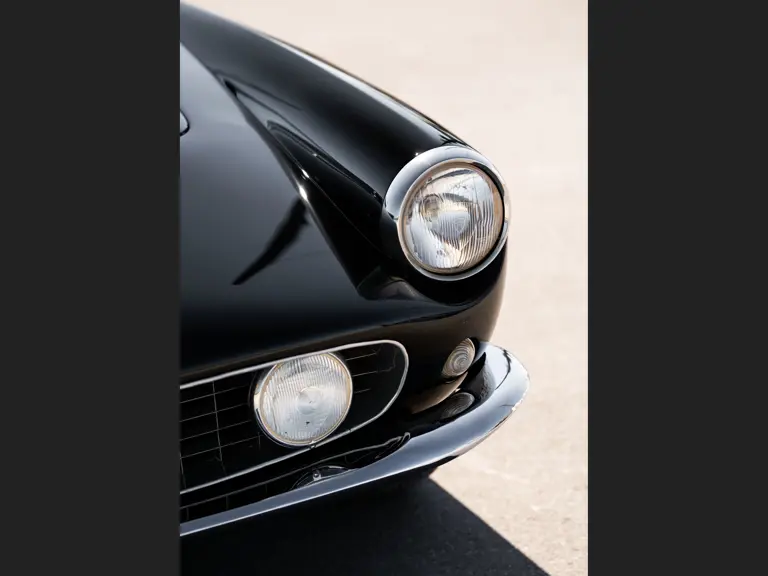
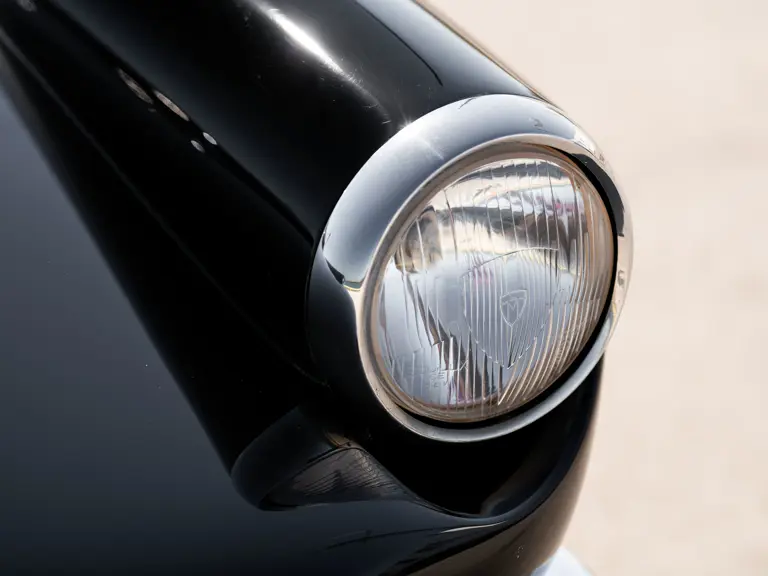


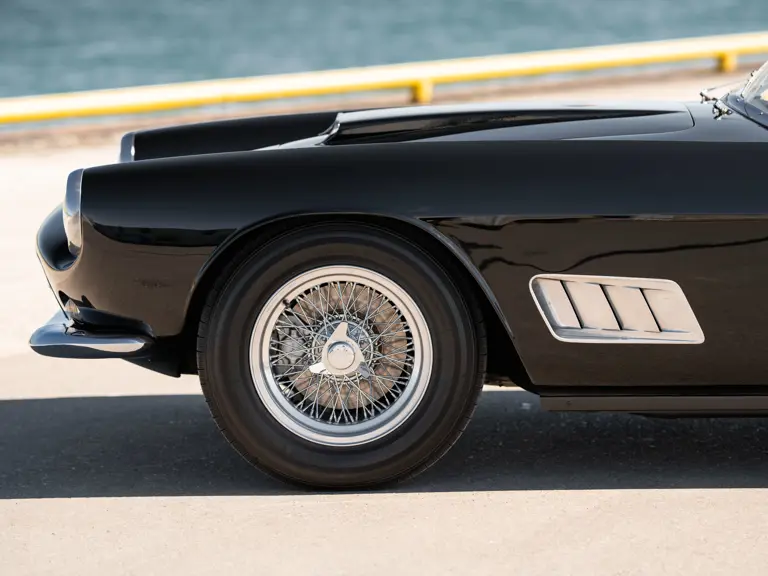
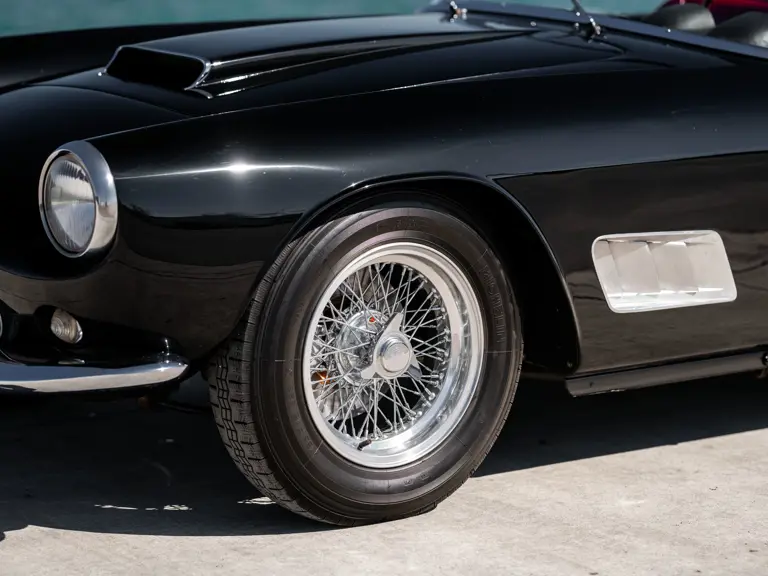
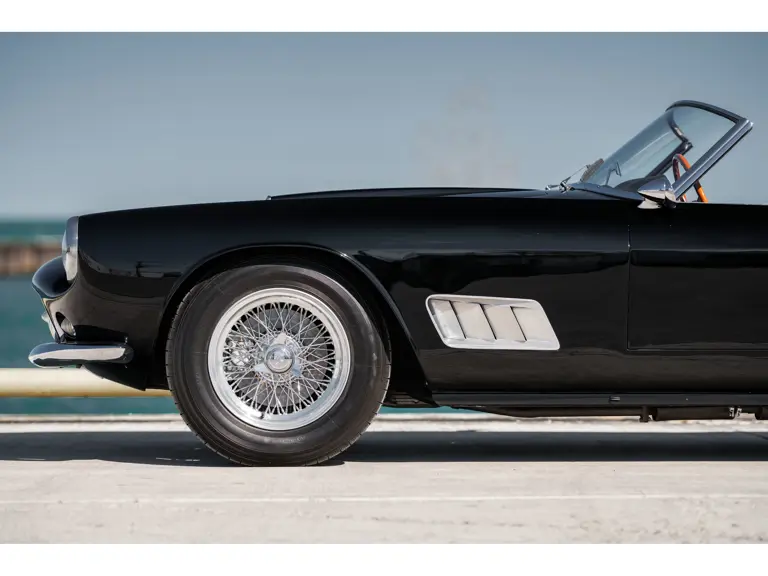
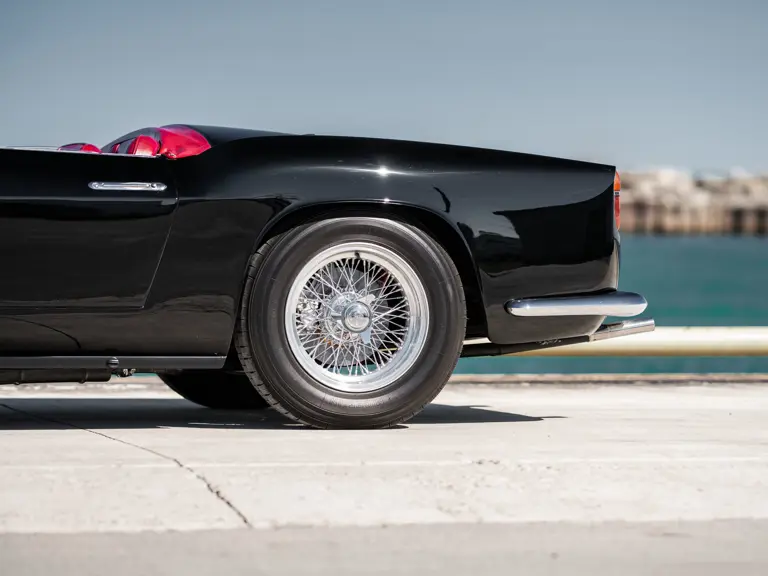
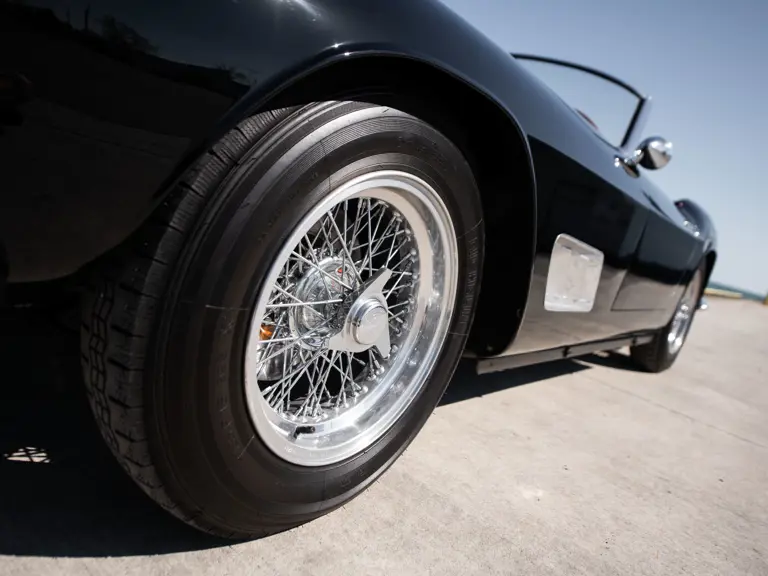

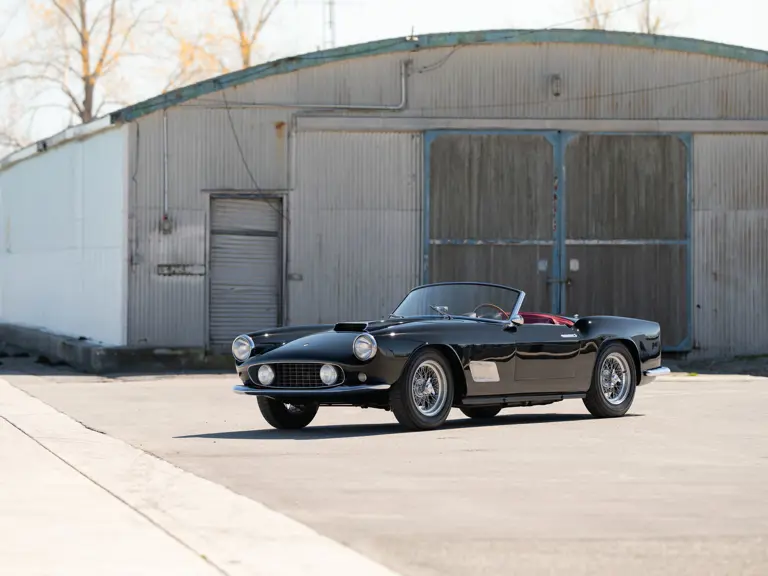
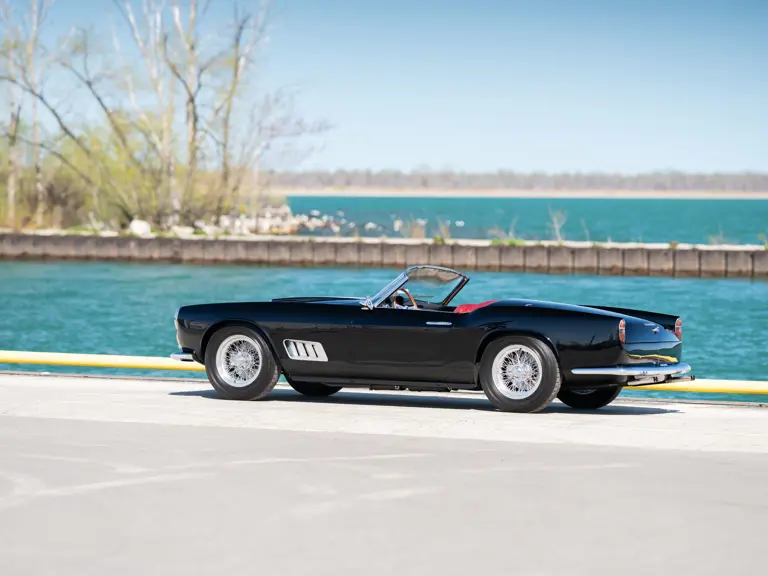
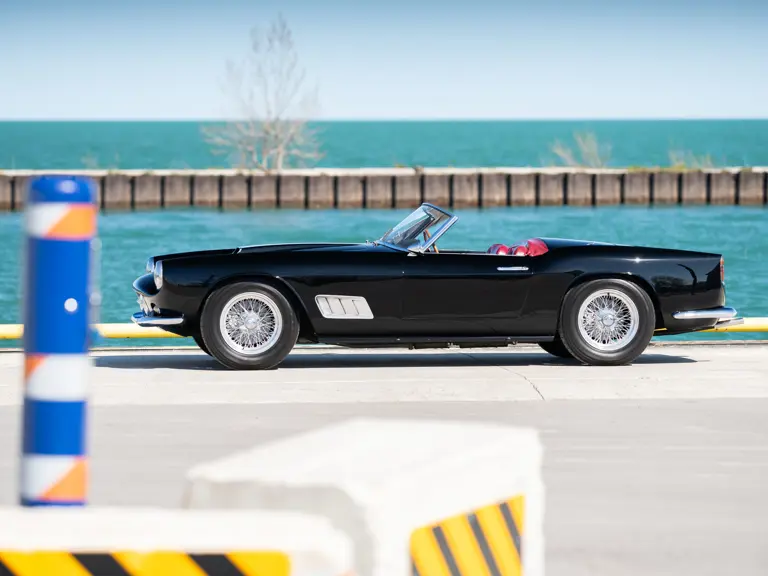
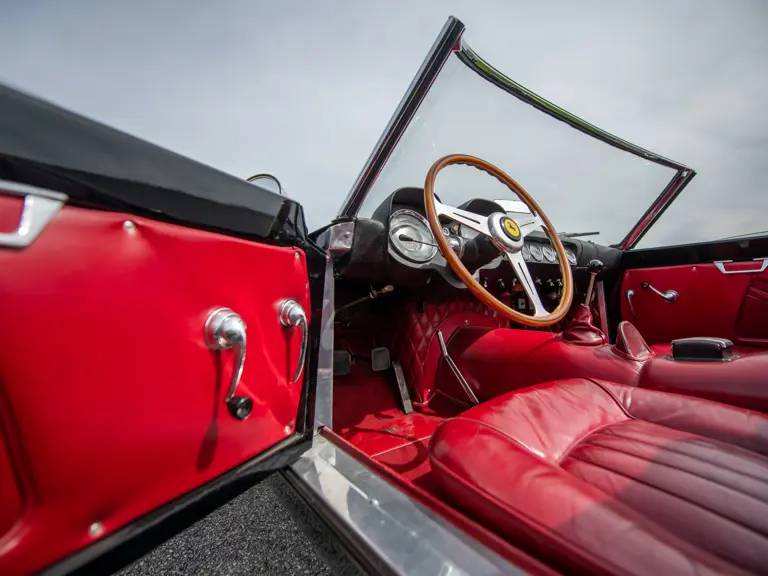
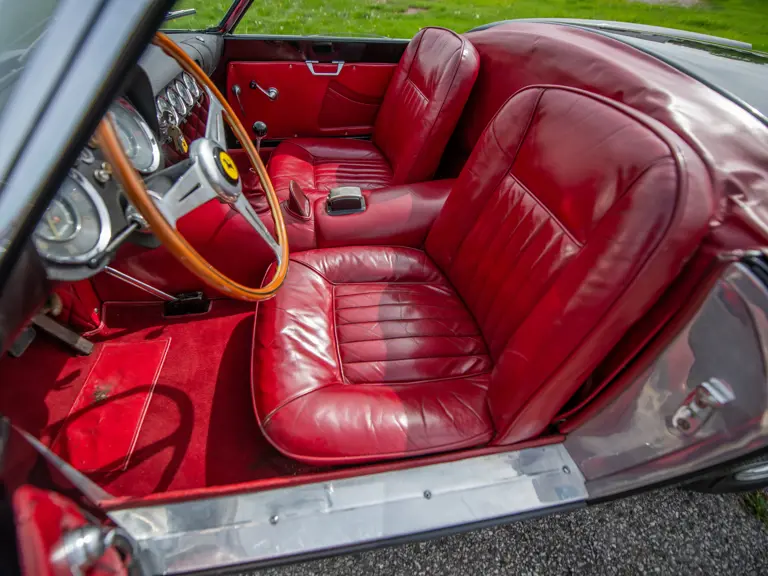
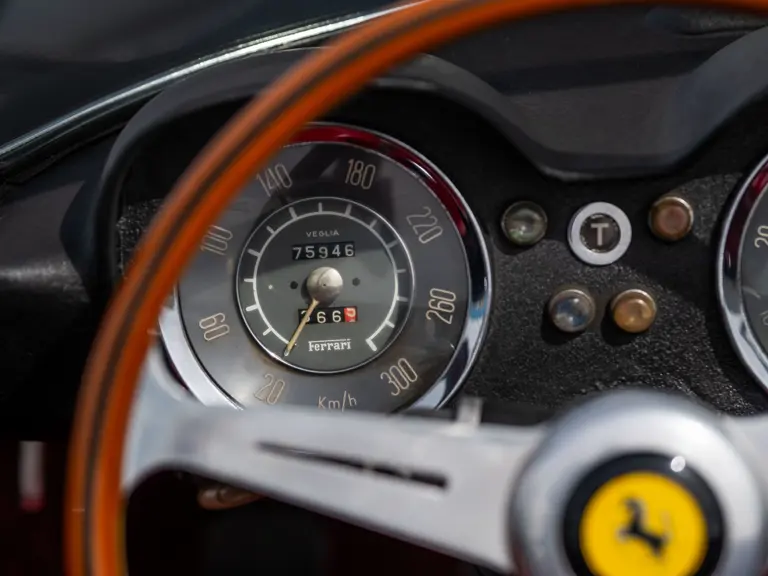
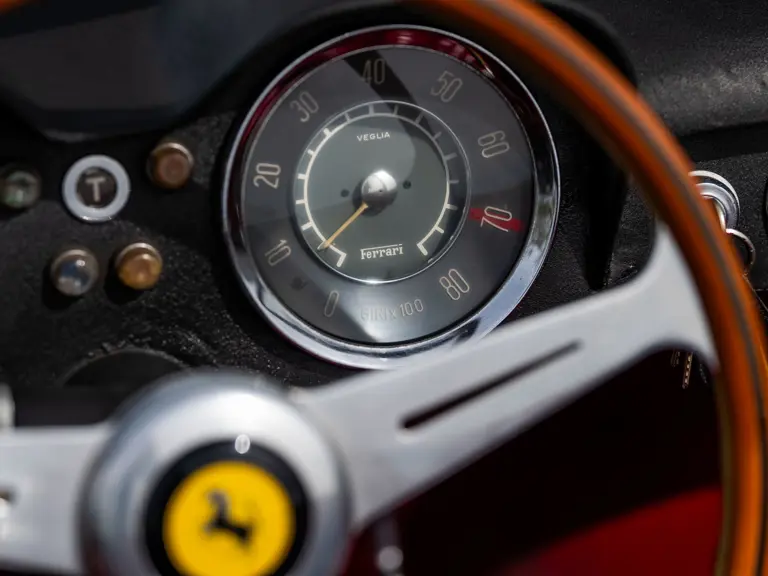
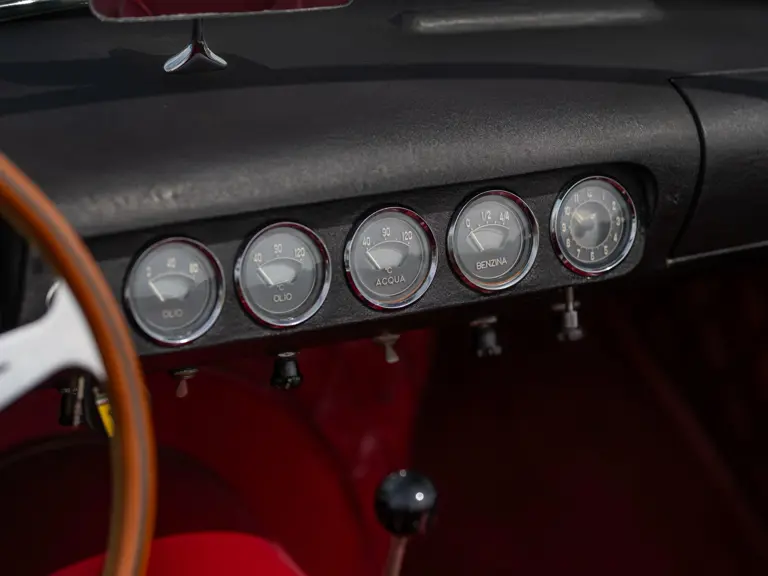


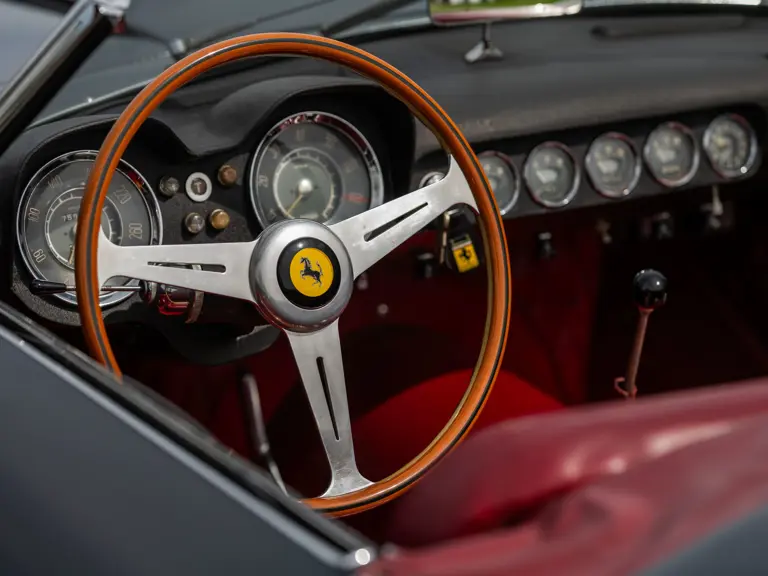

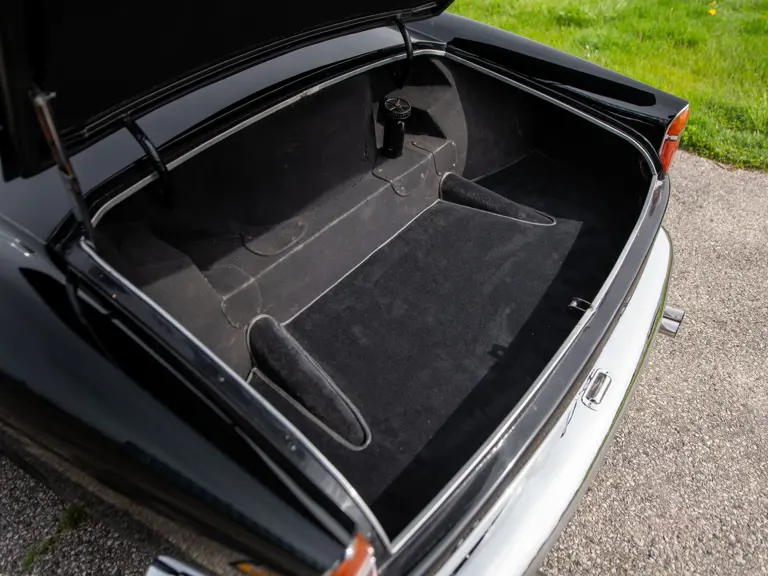
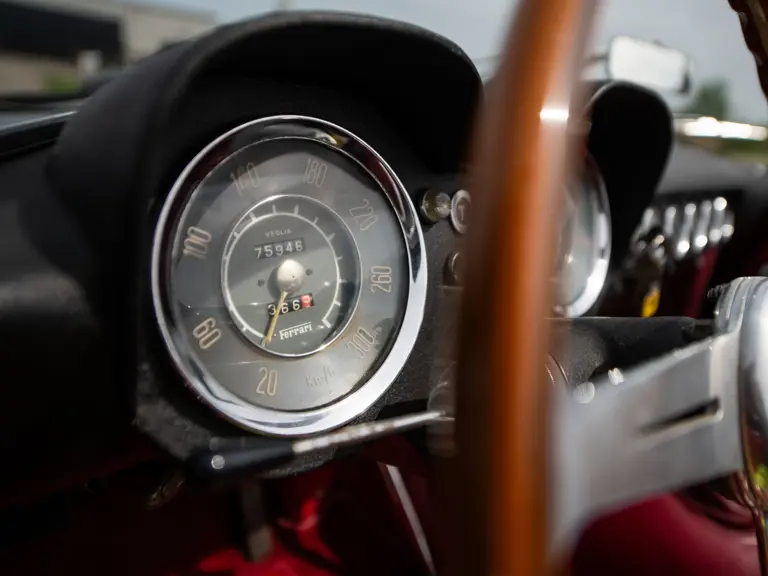
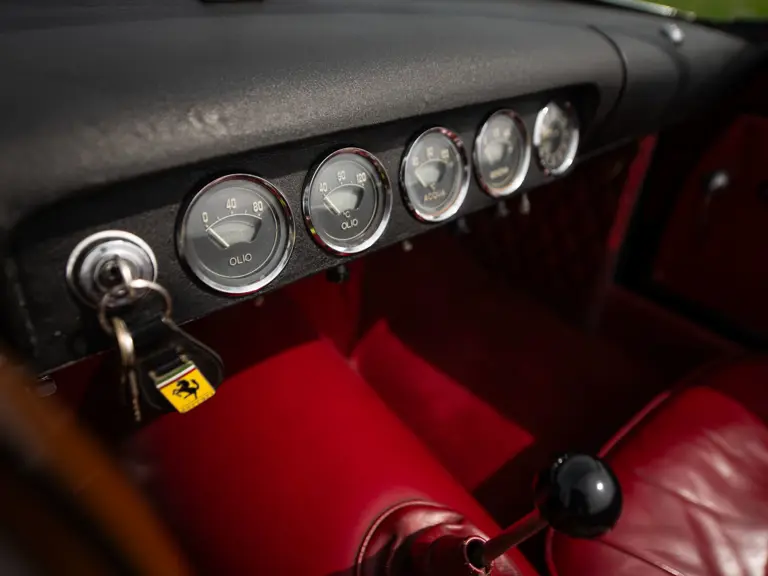
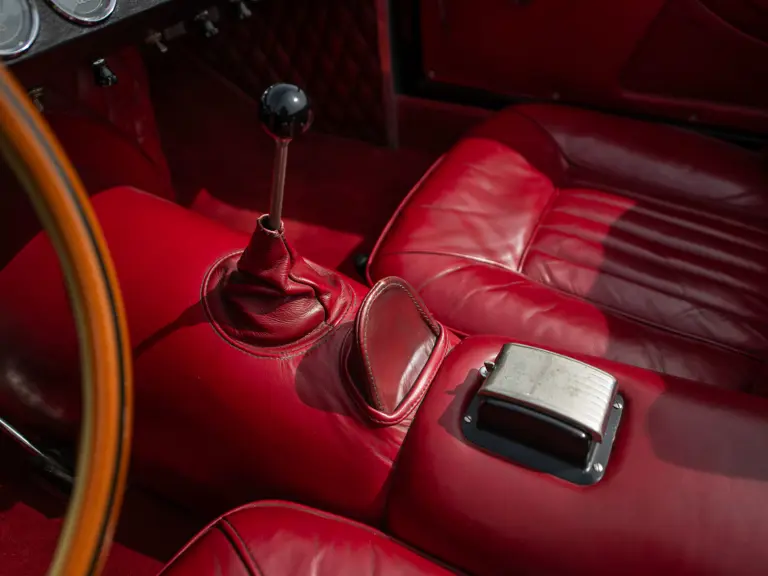
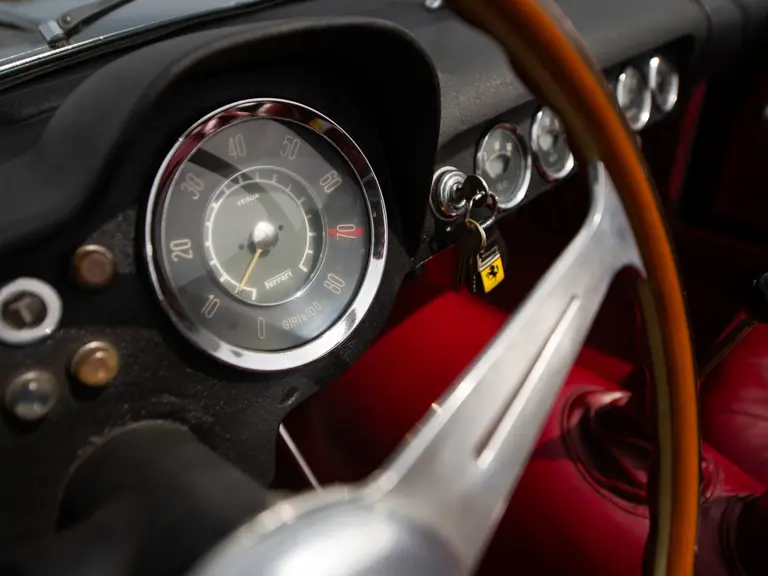
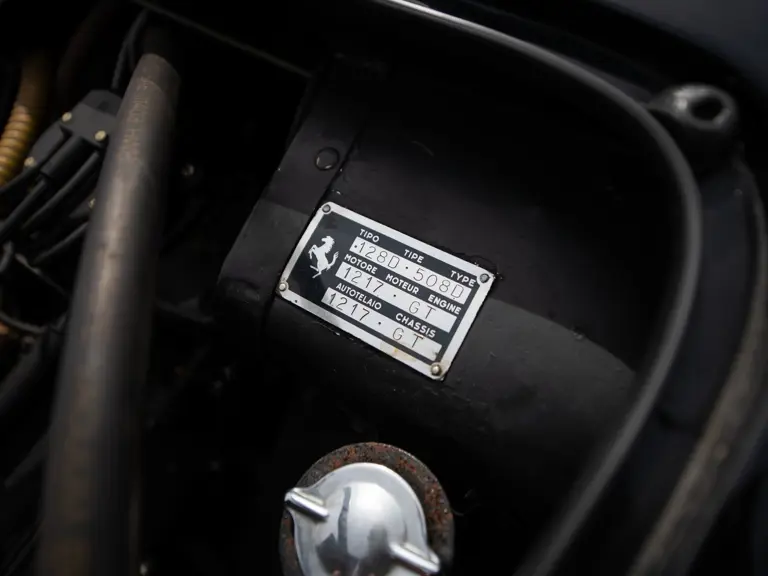
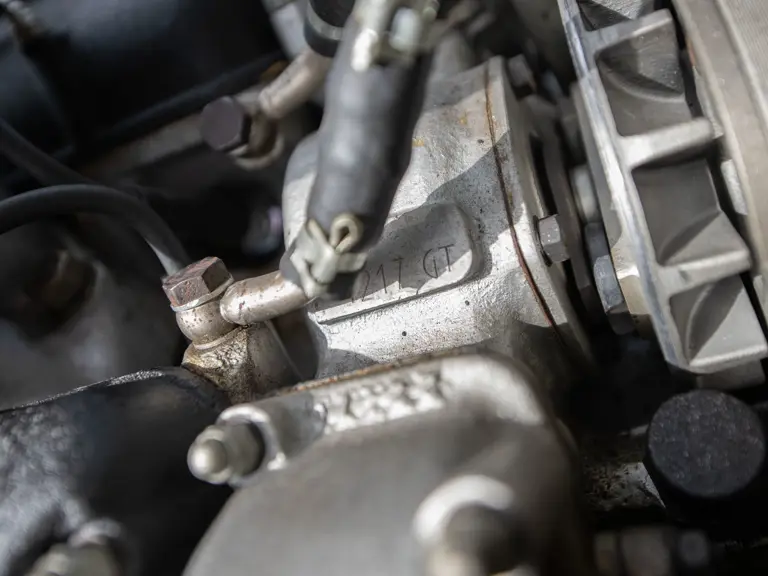

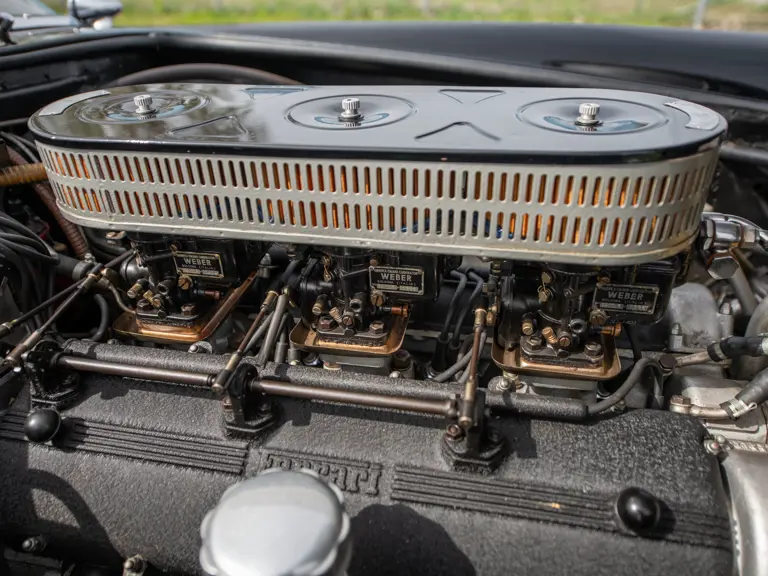
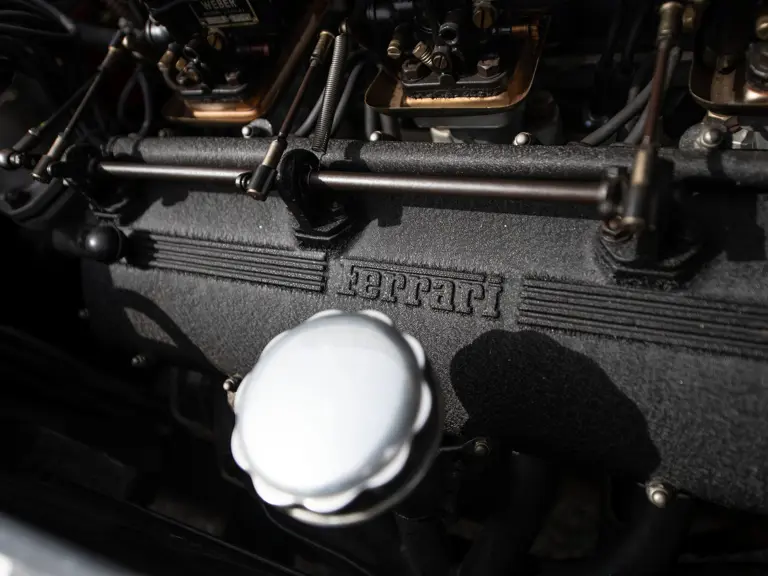
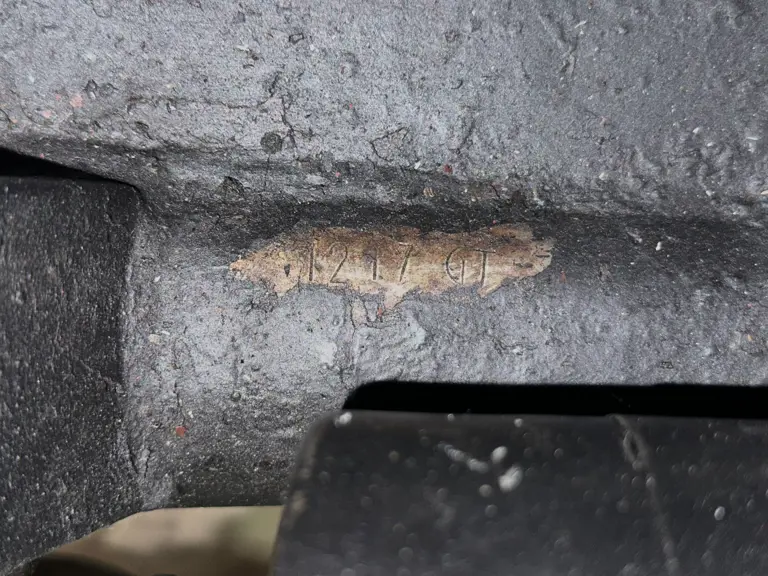
 | Monterey, California
| Monterey, California
